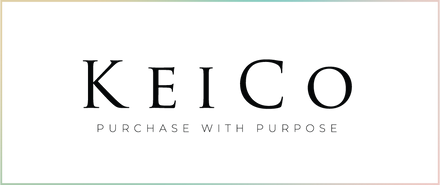Train. Sweat. Plunge. Repeat. Have you unlocked the VO₂max Advantage? 🧠 💪
Can Sauna + Cold Boost VO₂max?
What the Science Really Says
At KeiCo, we're building wellness that delivers - not just as mindful rituals, but as measured performance. One of the most telling metrics in endurance and health is VO₂max - the maximum rate at which your body can take in, transport and use oxygen. Higher VO₂max = greater endurance, more resilience, better relaxation and long‑term vitality.
Recent scientific findings suggest that when heat and cold exposure are paired with consistent training, they may help enhance VO₂max - and speed up recovery. Below, we explore how this works, what the evidence says and how you might incorporate it into your routine.
🔥 Sauna & Heat: The VO₂max Accelerator
-
Exercise + Sauna (8 week Randomised Control Trial): Adding 15 minutes of sauna after each workout showed greater improvement in VO₂max compared to training alone, also reducing blood pressure and cholesterol.
-
Post‑run Sauna (3 weeks, trained runners): Spending 30 minutes at ~90 °C immediately after runs increased plasma volume by ~7% and extended time‑to‑exhaustion by ~32%.
-
Hot‑Water Immersion (6 days): 40 minutes at ~40 °C following training increased heat acclimation and endurance performance in warm conditions.
Why this works: Heat exposure increases plasma volume and overall blood volume, improves stroke volume (how much your heart pumps per beat) and enhances cardiac efficiency - much like altitude training, but more accessible.

❄️ Cold Exposure: The Recovery Multiplier
-
Cold Water Immersion (CWI): Used post‑endurance sessions, it has been shown to improve heart‑rate variability (HRV), accelerate recovery and boost readiness. This supports higher training volume over time.
-
Pre‑cooling Strategies: Cold showers or short cold plunges prior to events in heat have been linked to better time‑trial performance.
Caveat: Using cold immediately after strength training may dampen gains in muscle hypertrophy. The timing of cold exposure matters!
Why this works: Cold reduces inflammation and perceived exertion, enabling you to sustain higher intensities in endurance blocks, adapt better and recover faster.

🌡️ Contrast Therapy: The Best of Both
This is where KeiCo’s ethos truly shines: Train • Sweat • Plunge • Repeat. Alternating hot (sauna or heat exposure) with cold (plunge, immersion) enhances vascular flexibility, improves recovery and helps maintain training consistency - which indirectly supports VO₂max gains.

✅ KeiCo‑Ready Protocols
Here are sample routines inspired by trials and our own Performance Spa Suite design:
| Goal | Protocol |
|---|---|
| KC Performance Sauna Finisher | 20‑30 mins sauna at 80‑90 °C immediately after cardio, 3‑4 × per week, for 3 weeks. |
| KC General Fitness Boost | 15 mins sauna post‑workout, with consistent training over 8 weeks. |
| KC Cold Recovery | 10‑12 mins plunge at 10‑15 °C after endurance sessions; avoid directly after strength sessions. |
| KC Contrast Rounds | Finish with a sauna; then 2‑3 rounds of plunge, ending cold. |
🧭 KeiCo Call to Action
Ready to put the science into practice?
Explore the KeiCo Performance Spa Suite - our holistic structure designed for Training. Sauna. Plunge. Repeat. It’s more than a build; it’s a tool for consistent progress, recovery and elevated endurance.
And keep your eyes peeled…👀 we’re excited to be involved in a university‑led VO₂max study coming soon!

❓ FAQs for boosting your VO₂max
1. Can using a sauna really increase VO₂max?
Yes, research shows that adding sauna sessions after workouts can significantly improve VO₂max. This happens through increases in plasma volume, improved heart efficiency and better cardiovascular adaptation, especially when used consistently over several weeks.
2. How long should I stay in a sauna to get fitness benefits?
For performance support, 15–30 minutes at 80–90 °C, 3–4 times per week after training, has been shown to enhance endurance, cardiovascular markers and recovery. Always start gradually and stay hydrated.
3. Is cold water immersion good after cardio training?
Absolutely. Cold plunging after endurance sessions can support recovery by reducing inflammation, improving heart rate variability (HRV) and lowering perceived fatigue - all of which contribute to consistent, high-quality training.
4. Should I do cold plunges after strength training?
Not immediately. Cold exposure right after resistance training may blunt muscle growth by interfering with natural inflammation. Instead, use cold plunges post-cardio or with at least a few hours between strength sessions.
5. What is contrast therapy, and how does it help VO₂max?
Contrast therapy alternates hot (sauna) and cold (plunge) exposure. It improves vascular function, accelerates recovery and helps maintain consistent training intensity - which indirectly supports VO₂max improvements over time.













